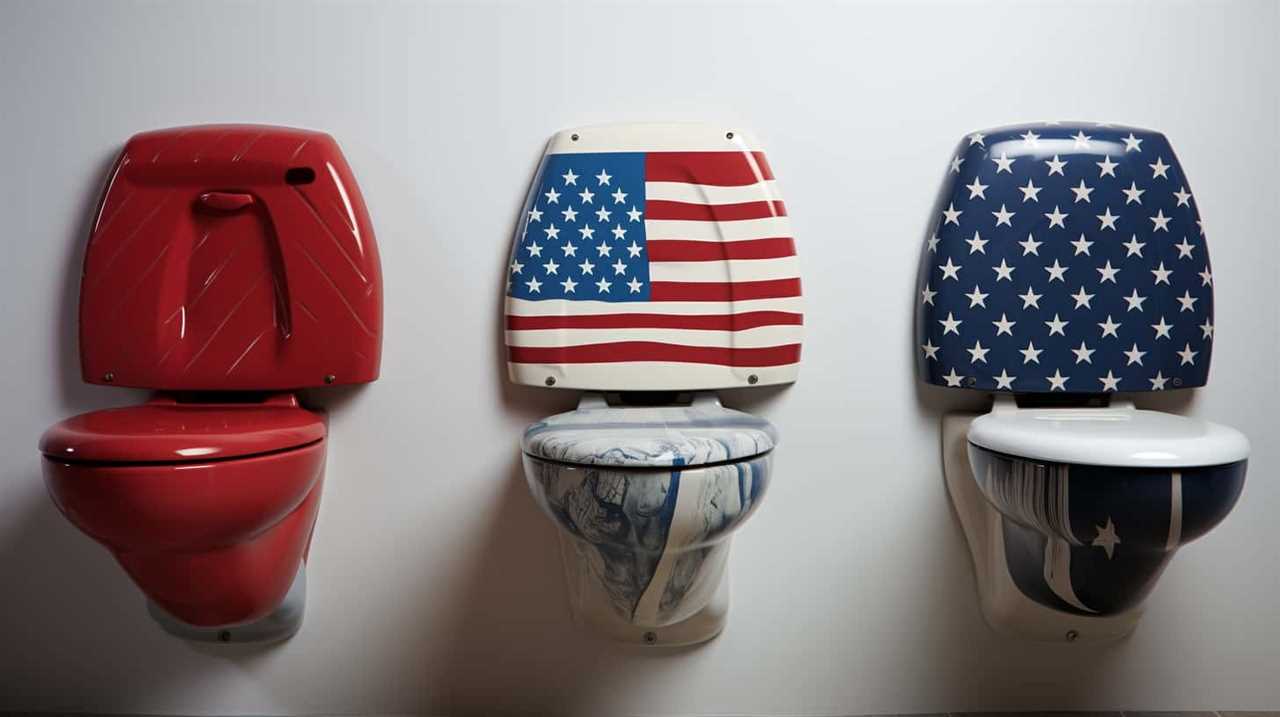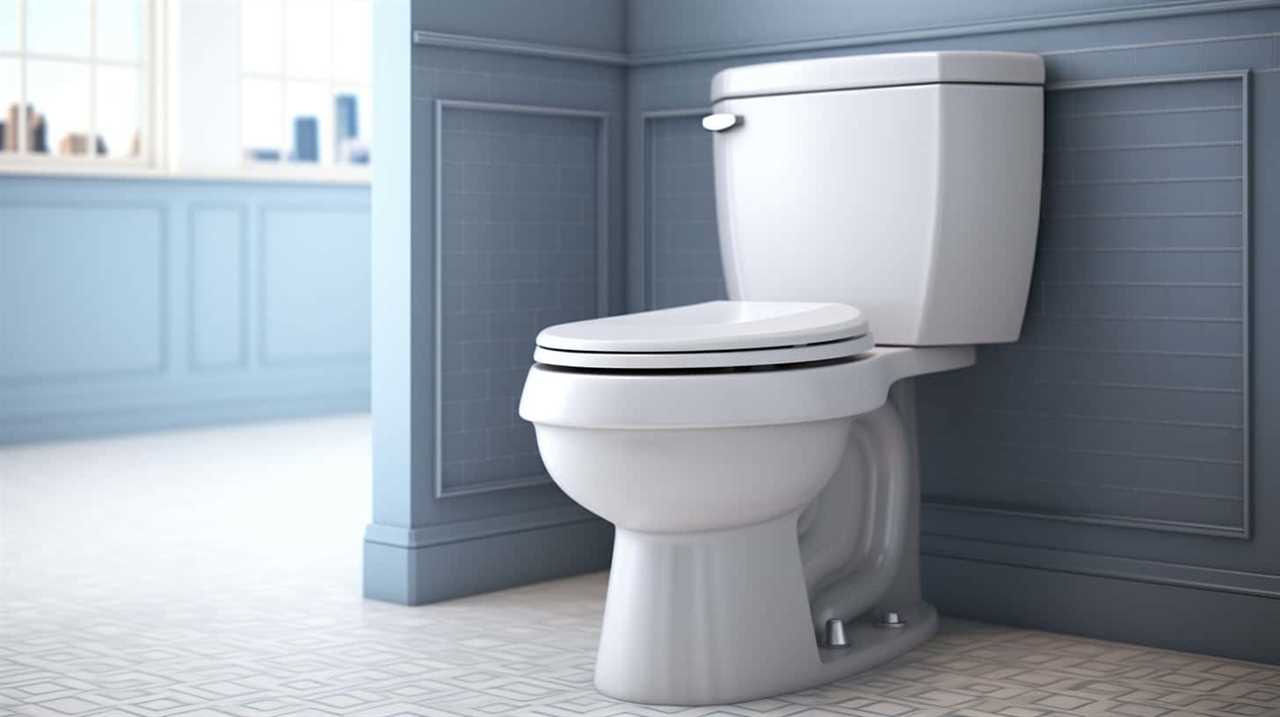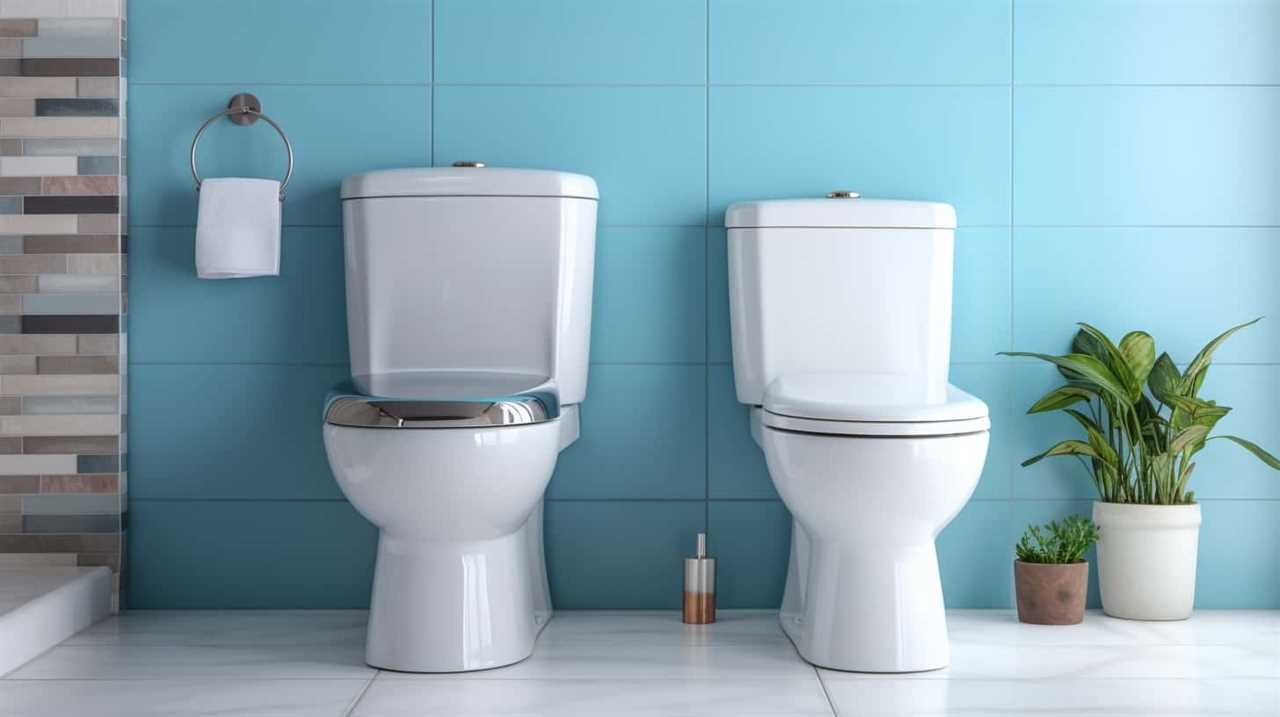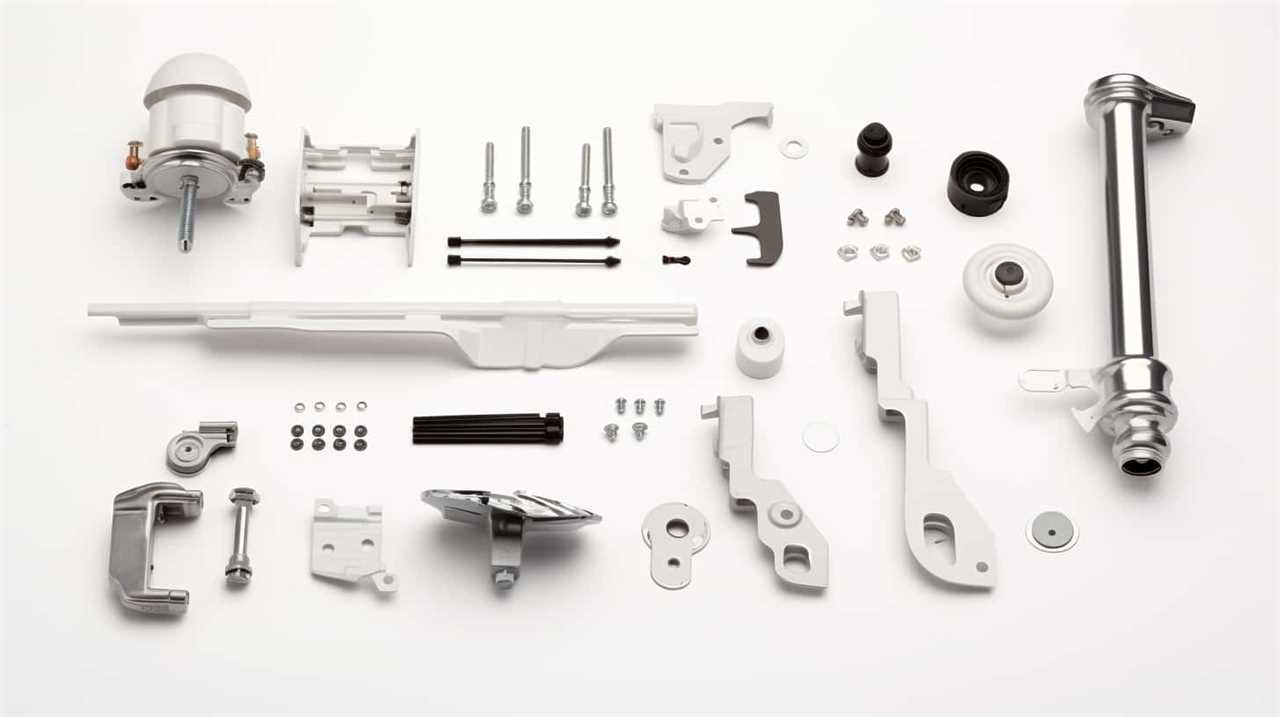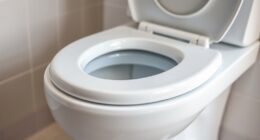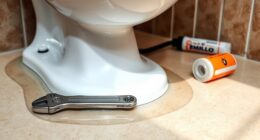As I delve into the world of flushable wipes, I find myself wading through the murky waters of truth and deception.
Are these seemingly convenient products truly as flushable as they claim? With a scientific lens, I aim to unravel the complexities surrounding flushability.
Through rigorous analysis and testing, we will explore the environmental impact, plumbing risks, and certification standards of these wipes.
Prepare to embark on a journey of knowledge, where myth and reality collide.

Key Takeaways
- Flushable wipes contribute to marine pollution and harm marine life and ecosystems.
- Flushable wipes can cause damage to pipes and sewer infrastructure, leading to blockages and clogs.
- Flushable wipes undergo rigorous testing and certification processes to ensure they can be easily processed by wastewater treatment plants.
- Non-flushable alternatives like bidets, reusable cloths, and eco-friendly toilet paper are more sustainable options.
The Definition of Flushable
The definition of flushable is a highly debated topic within the industry. Consumer confusion about flushable labels and municipalities’ regulations on flushable products have further complicated the matter. To achieve clarity and precision, it’s necessary to establish a scientific and technical understanding of what constitutes a flushable product.
In basic terms, a flushable product is one that can be safely and efficiently disposed of by flushing it down the toilet. However, this definition isn’t sufficient to address the concerns raised by consumers and municipalities. Many wipes labeled as flushable don’t break down properly, leading to clogged pipes and sewer backups.
To address this issue, industry standards have been developed, such as the INDA/EDANA flushability guidelines, which provide specific criteria for determining the flushability of a product.
Understanding the definition of flushable requires a comprehensive analysis of the materials used, the product’s ability to disintegrate, and its impact on sewage systems. By adhering to industry guidelines and ensuring proper labeling, manufacturers can help reduce consumer confusion and meet municipalities’ regulations on flushable products.
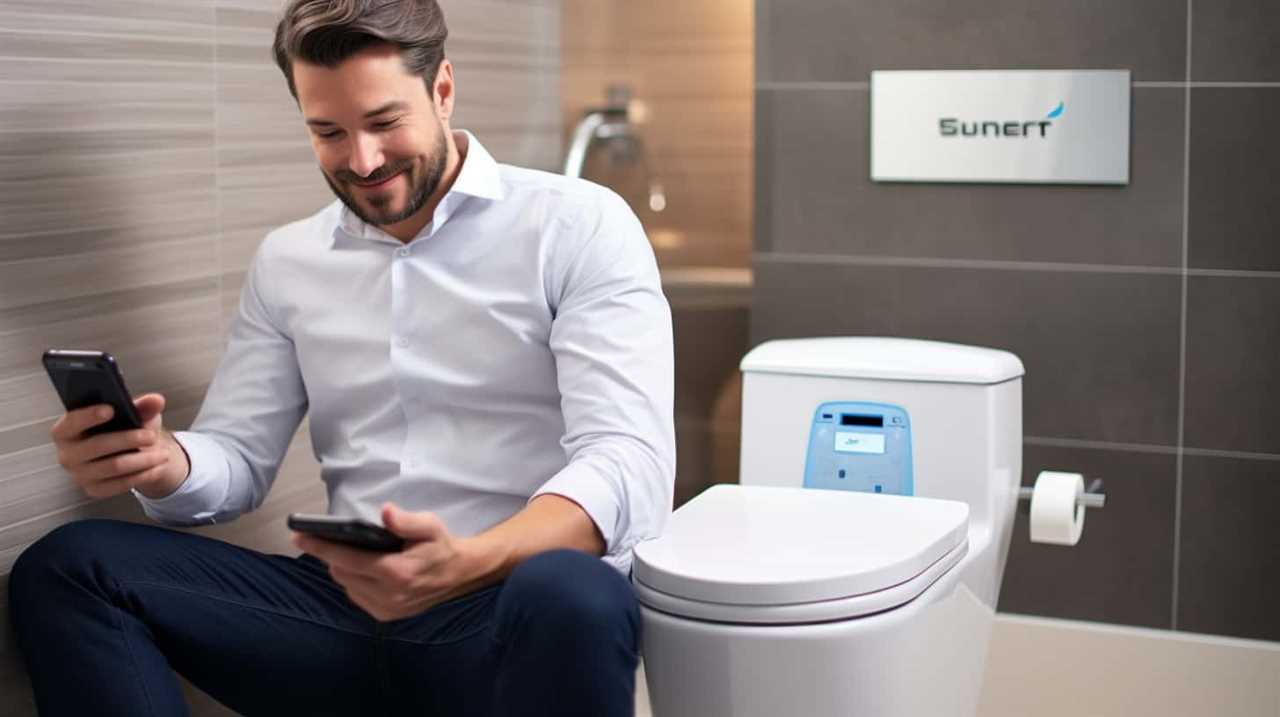
The Environmental Impact of Flushable Wipes
As I delve into the topic of the environmental impact of flushable wipes, it becomes evident that their disposal is a pressing concern. The convenience and popularity of flushable wipes have led to widespread use, resulting in significant environmental consequences. One major issue is marine pollution, as these wipes often end up in rivers and oceans, harming marine life and ecosystems. Additionally, there are biodegradability concerns, as many flushable wipes do not break down easily and can persist in the environment for years. To illustrate the severity of the problem, consider the following table:
| Environmental Impact of Flushable Wipes | Consequences |
|---|---|
| Marine pollution | Harm to marine life and ecosystems |
| Biodegradability concerns | Persistence in the environment |
Understanding the environmental impact of flushable wipes is crucial in addressing this issue. However, it is not the only concern. The risks to plumbing and sewer systems also need to be explored.
The Risks to Plumbing and Sewer Systems
Continuing from our exploration of the environmental impact of flushable wipes, it’s important to address the quantifiable risks that these wipes pose to plumbing and sewer systems.
When flushed down the toilet, wipes can cause significant damage to pipes and sewer infrastructure. These wipes don’t break down easily like toilet paper, which can lead to blockages and clogs. Over time, these blockages can cause pipes to burst or sewage to back up into homes and streets.
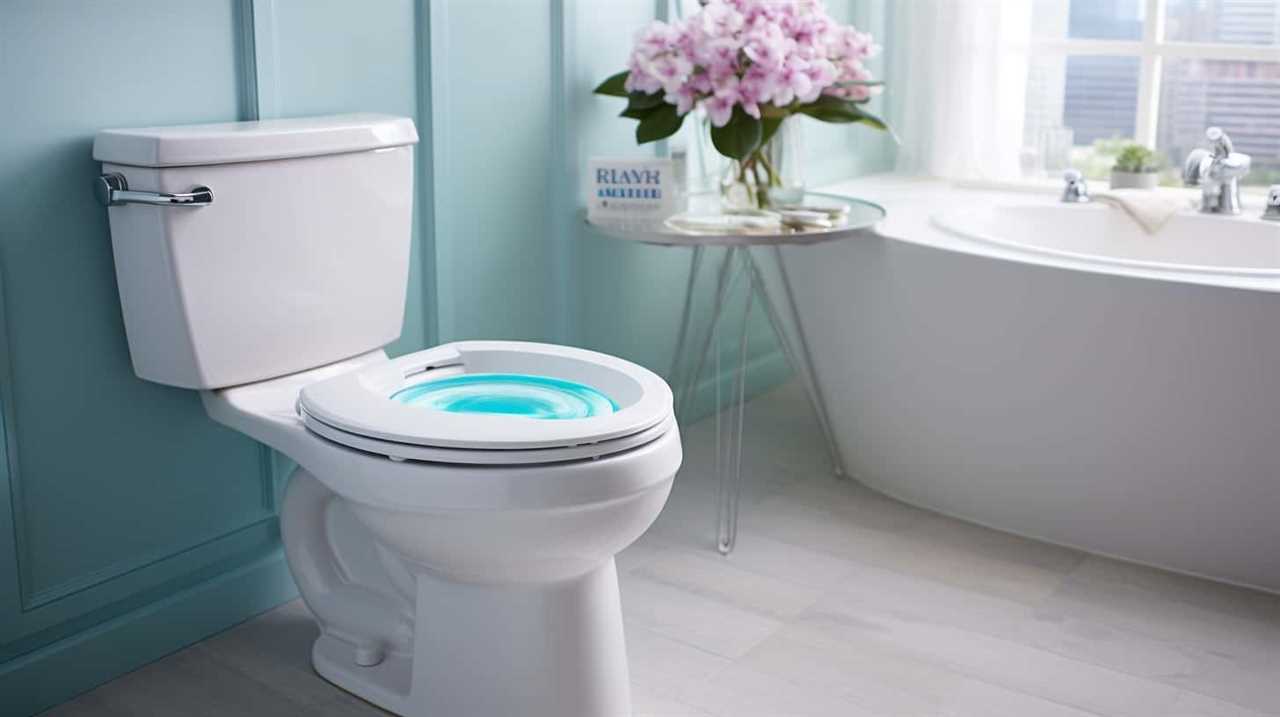
This not only poses a risk to water contamination but also has a detrimental impact on marine life. When sewage overflows, it can release harmful pollutants into rivers, lakes, and oceans, endangering aquatic ecosystems.
It’s crucial to understand the risks associated with flushing wipes, as they can have far-reaching consequences for both our plumbing systems and the environment.
Testing and Certification Standards for Flushable Wipes
To ensure the flushability of wipes, industry standards require them to undergo rigorous testing and certification processes. These procedures are in place to ensure that flushable wipes don’t cause any harm to plumbing and sewer systems. Testing procedures examine key factors such as biodegradability, dispersibility, and flushability.
Biodegradability testing determines whether the wipes break down into smaller particles that can be easily processed by wastewater treatment plants. Dispersibility testing measures the ability of wipes to disintegrate when agitated in water. Flushability testing assesses whether the wipes can safely pass through standard plumbing systems without causing blockages or clogs.

Industry regulations set forth by organizations such as the International Organization for Standardization (ISO) and the National Association of Clean Water Agencies (NACWA) ensure that flushable wipes meet these stringent criteria before they can be labeled as such.
Alternatives to Flushable Wipes
An alternative to flushable wipes is using toilet paper.
While flushable wipes may seem convenient, they can cause clogs in sewer systems and contribute to environmental pollution.
Toilet paper, on the other hand, is a sustainable option that’s specifically designed to break down quickly when flushed. It’s made from biodegradable materials and undergoes rigorous testing to ensure its quality and performance.
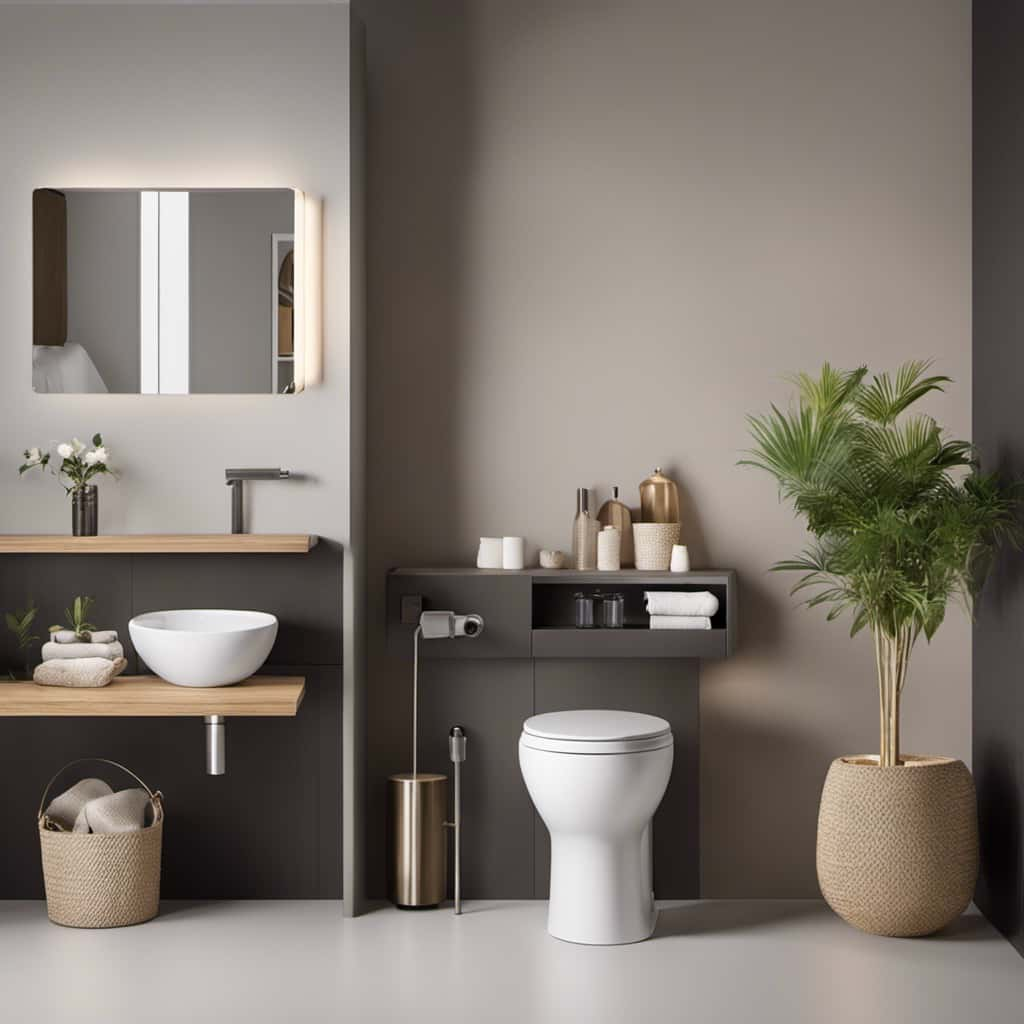
Toilet paper is also widely available and affordable, making it a practical choice for personal hygiene alternatives.
By choosing toilet paper over flushable wipes, individuals can reduce the strain on wastewater treatment systems and minimize their impact on the environment.
Making sustainable choices like this is crucial for maintaining the health and cleanliness of our sewer systems and preserving our natural resources.
Frequently Asked Questions
Can Flushable Wipes Be Used by People With Sensitive Skin or Allergies?
As someone with sensitive skin or allergies, I would recommend considering flushable wipe alternatives. There are potential risks associated with using flushable wipes, such as irritation or allergic reactions.

How Long Does It Take for Flushable Wipes to Disintegrate in Water?
In my research, I’ve found that the disintegration time of flushable wipes in water can vary. It’s crucial to consider the environmental impact of these wipes and explore alternative options.
Are Flushable Wipes Safe to Use for Babies and Young Children?
Flushable wipes are not safe for babies and young children. While they may seem convenient, they pose a risk of clogging pipes and harming the environment. Traditional baby wipes are a safer and more environmentally friendly option.
Can Flushable Wipes Cause Blockages in Septic Tanks?
Can flushable wipes cause blockages in septic tanks? It is essential to consider their impact on the environment. Are flushable wipes truly flushable and biodegradable? Exploring sustainable alternatives can help minimize potential harm.
Are Flushable Wipes Biodegradable and Compostable?
Flushable wipes, though marketed as environmentally friendly, may not be truly biodegradable or compostable. The environmental impact of these wipes is a concern, as they can contribute to clogged sewer systems and have negative effects on aquatic ecosystems.

Conclusion
In conclusion, after careful analysis and scientific examination, it’s abundantly clear that the claim of flushable wipes being truly flushable is nothing short of a paradox.
The environmental impact, risks to plumbing and sewer systems, and lack of stringent testing and certification standards all point towards a different truth.
So, next time you reach for those supposedly convenient wipes, remember the unintended consequences they bring.
The irony of their flushability is indeed a bitter pill to swallow.
